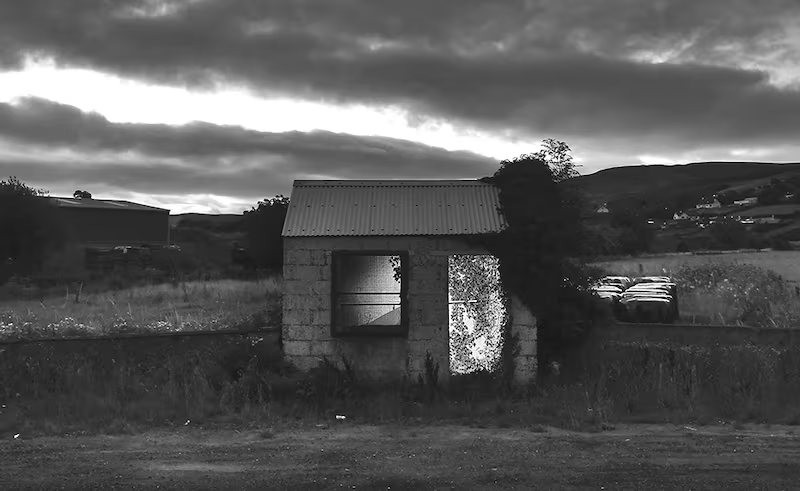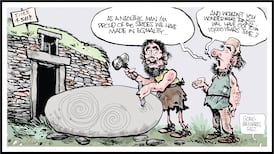After Éamon de Valera was sprung from Lincoln prison, this month a century ago, he set his sights on the prize of American backing for an Irish republic and by June had embarked on what became an 18-month trail across the US.
The trip had decidedly mixed results. As president of Sinn Féin, de Valera addressed large crowds in various states, was referred to by sympathisers as the “Washington of Ireland” to link his mission to one of the founding fathers of the US, and raised a lot of money.
But his crusade also exposed tensions within the Irish-American community about who should speak on its behalf, and crucially, de Valera did not receive the backing of President Woodrow Wilson’s administration.

While the US Senate earnestly requested that Irish republicans be granted a hearing before the peace conference in Paris, and while the US Senate “expresses its sympathy with the aspirations of the Irish people for a government of their own choice”, Wilson was not going to antagonise the British government.
The SDLP's John Hume was despondent after the failed powersharing experiment in Northern Ireland and it led him to look outside Ireland
The Irish question
Those limitations were to remain a problem for those over the decades that sought to engage American administrations with the Irish question.
When minister Frank Aiken secured an audience with President Roosevelt in 1941 and Aiken asked him if he could assure the Irish that they had his support in resisting any potential British aggression against Ireland, Roosevelt replied; “There’s no such thing as British aggression.”
John J Hearne, Irish ambassador in the US from 1950 to 1960, composed a memorandum in September 1951 lamenting that, unlike the situation during the war of independence, “no great national organisation has been called into existence to further the cause…the issue of Irish national unity has never been blazed across the American continent as the issue of Irish national independence was blazed 30 years ago”.
As Paul O’Dwyer, an Irish-born New York Democrat, saw it, “the ignorance of the vast majority of Americans on Ireland is beyond belief”.
Two decades later, the SDLP’s John Hume was despondent after the failed powersharing experiment in Northern Ireland and it led him to look outside Ireland. He went to the US because in SDLP colleague Séamus Mallon’s words, “quite simply… there was nowhere else to go”.
Pressure
A statement from the US president Jimmy Carter in August 1977 was regarded as breaking half a century of silence by the White House on Northern Ireland. It committed the US to supporting powersharing and averred that the US had an interest in a settlement.
The US dimension remained relevant in subsequent decades and at various stages generated considerable pressure on British governments, including those led by Margaret Thatcher, to abandon their chilly indifference towards the Irish problem.
The “greening of the White House” during the Bill Clinton era in the 1990s has been well documented, as has its influence on the peace process, including George Mitchell’s chairing of the negotiations that led to the Belfast Agreement.
Concern from Irish-American voices about the feared fragility of the Belfast Agreement is entirely legitimate given the role of US diplomacy in securing it
The relevance of that US dimension has declined significantly in recent times; a chorus of concern from the EU has replaced it.
Even when president Barack Obama visited Ireland in 2011, while the mood music was positive, his main speech was a patchy history lecture about the fighting, resilient Irish, the “Irish sweat that built our great cities”, winter turning to spring, “a little country that inspires the biggest things” and a people who “never stop imagining a brighter future”.
Because of the relative peace in Ireland in comparison to the early visits of Bill Clinton, Obama’s trip was always going to be celebratory rather than carrying the sense that cometh the Irish hour of need, cometh the American president.
Imperilled
While it was reported this week that leading Irish-Americans, including former US ambassadors, have written to Theresa May and Leo Varadkar expressing concern that the Belfast Agreement could be imperilled by Brexit and notwithstanding Minister for Foreign Affairs Simon Coveney’s visit to Washington, the focus seems to be more on the historic role played by the US during the peace process than its contemporary relevance.
The foot dragging about appointing a US ambassador to Ireland following the departure of Kevin O’Malley in January 2017 is revealing and the annual trip to the White House by the taoiseach is now just a custom rather than a cause.
Concern from Irish-American voices about the feared fragility of the Belfast Agreement is entirely legitimate given the role of US diplomacy in securing it, and while, as with a century ago, some supportive US politicians with Irish ancestry might pass sympathetic or even defiant resolutions, it is difficult to see how Irish American influence or pressure will yield any results on the current Irish Border problem.
The historian David Sim has argued that as far back as the late 19th century, Ireland “occupied an ambiguous place in Americans’ thoughts about global politics”.
We seem to be going back to the future.















